Join us as we take a closer look at 12 different species of birds of prey that you can spot in Portugal.
Welcome, nature enthusiasts and wanderlusters! Portugal isn’t just famous for its pastel de nata and iconic Fado music; it’s also a haven for some of the most majestic birds of prey in Europe. So, pack your binoculars, and let’s embark on a feathery journey to discover the apex aviators of this Iberian wonderland.
1. Bonelli’s Eagle (Aquila fasciata)
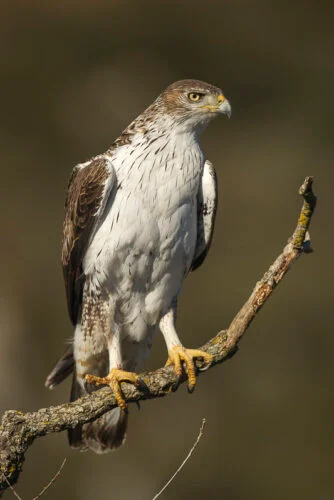
The Bonelli’s Eagle is a sight to behold with its pale underbelly contrasted by a dark upper side. This medium-sized, robust-bodied bird sports yellow, piercing eyes and a short wedge-shaped tail. It thrives in open woodlands, rocky outcrops, and scrub-covered hills.
Rabbit is its dish of the day, but occasionally it’ll snatch a pigeon or partridge. With a swift dive from a high perch, the Bonelli surprises its prey. These solitary birds patrol their territories with elegant, circular patterns.
Their aerial courtship dances consist of daring dives and climbs. While they’re largely residents in Portugal, the younger ones might wander a bit. Want to catch a glimpse? Try the Alentejo region and the cliffs of Douro Valley.
2. Golden Eagle (Aquila chrysaetos)
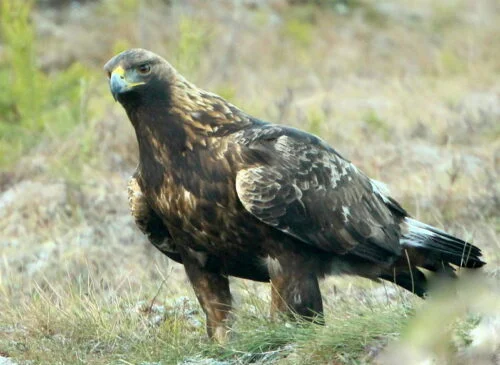
This majestic bird is truly a golden marvel, with its dark brown plumage set off by a shimmering golden nape. Inhabiting mountainous terrains and open moorlands, these powerful eagles scan the grounds for prey, which includes anything from rabbits to foxes.
Their hunting prowess is legendary; soaring high, they dive with astonishing speed to seize their quarry. Bonding for life, their aerial courtship displays are a blend of undulating flights and dramatic dives. While they are mostly sedentary, young ones might roam around. The highlands of the northern regions, like Trás-os-Montes, are where they majestically rule the skies.
3. Griffon Vulture (Gyps fulvus)
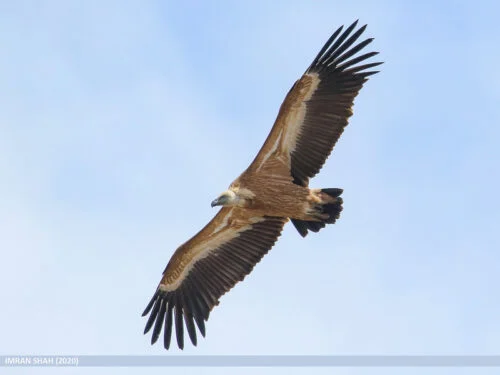
This massive bird commands attention with a pale body, dark wings, and a distinct white, bald head. Their huge wingspan and neck ruff make them easily identifiable. Mountainous areas with cliff-ledges are their domain, and they’re nature’s clean-up crew, feeding on carcasses. Less hunters and more scavengers, these social birds often move in large groups.
Lifelong partners, they cherish their offspring in high cliff nests. Mostly residents, they sail the skies on warm updrafts. The cliffs of Tejo International Nature Park are the prime locales to witness their majesty.
5. Egyptian Vulture (Neophron percnopterus)
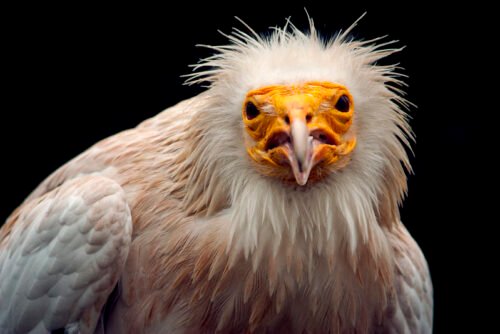
Distinctive with its white plumage and yellow face, the Egyptian Vulture is the smallest of the European vultures. They’re ingenious birds, known to use tools – like using stones to crack open eggs!
Their habitat ranges from open countrysides to mountainous terrains. They feed on carrion but won’t shy away from small mammals or bird eggs. Migratory in nature, they summer in Portugal and winter in Africa. The Douro Valley and Tejo International Nature Park are your best bets to spot them.
6. Red Kite (Milvus milvus)
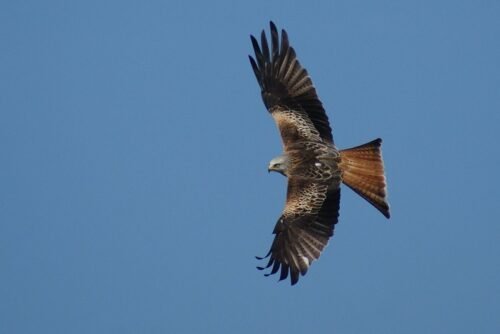
With a rusty-red hue and a forked tail, the Red Kite is unmistakable in flight. These are soaring birds, often seen riding thermals over open countryside. Their diet is varied, from small mammals to carrion and even earthworms after the rain. Gliding effortlessly, they’re ever-vigilant for a meal opportunity. While their numbers have dwindled in many parts of Europe, conservation efforts are aiding their comeback. Primarily winter visitors in Portugal, the northern regions like Minho offer the best views.
7. Black Kite (Milvus migrans)
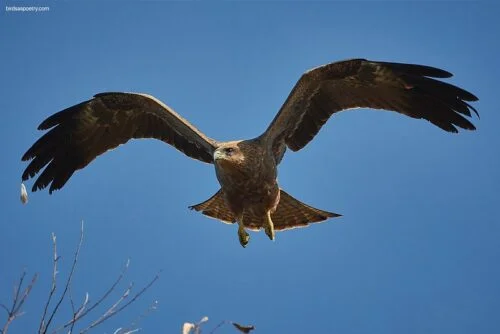
This raptor, with its forked tail and angled wings, is an agile flyer often seen soaring over open lands. Its reddish-brown plumage shimmers in the sun. The Black Kite prefers open countryside, wetlands, and even urban locales. These omnivores are not picky eaters; they’ll go for anything from small mammals to carrion, and even scraps of food! With a graceful yet opportunistic hunting style, they’re also known to snatch food in mid-flight. Their breeding displays involve a series of dives and chases. Mainly migratory, they grace Portugal in summers, and the Tagus Estuary is an excellent place to spot them.
8. Western Osprey (Pandion haliaetus)
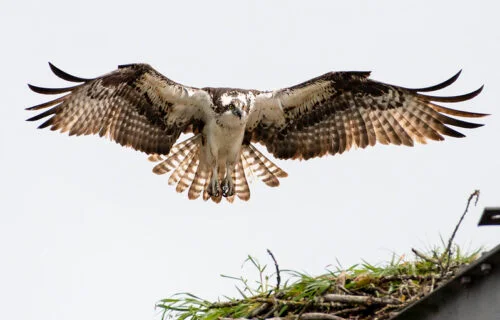
A fish-eating specialist, the Osprey is an awe-inspiring sight with its white underparts, dark eye patch, and hooked beak. They hover over water bodies before plunging feet-first to grab unsuspecting fish. Their outer toe is reversible, an adaptation that provides a better grip on slippery fish. While not breeding in Portugal, they are regular passage migrants, especially around coastal regions and significant freshwater bodies. The wetlands of the Algarve and the Tagus Estuary are prime spots to observe their fishing prowess.
9. Peregrine Falcon (Falco peregrinus)
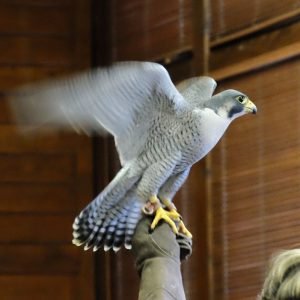
A speed demon of the avian world, the Peregrine Falcon is renowned for its breathtaking hunting stoop, diving upon its prey from great heights. Its blue-grey back, barred underparts, and strong mustachial mark make it a striking presence. While cliffs and mountains are traditional homes, don’t be surprised to see them in cities, taking advantage of tall buildings as nesting sites. Pigeons and small birds better beware, for they’re the falcon’s favored meal! Their courtship involves acrobatic displays and mutual food exchanges. These are year-round residents, and the coastal cliffs or even Porto’s skyscrapers could be where you sight one.
10. Eurasian Hobby (Falco subbuteo)
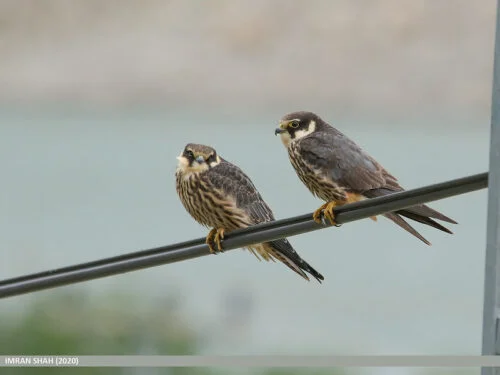
A dashing, agile falcon, the Hobby is a marvel in the air. Its slate-grey back and rufous underparts make it distinct. But it’s the bird’s acrobatics, chasing dragonflies, and even catching small birds mid-air, that leave watchers in awe. It’s a summer visitor to Portugal, preferring open countrysides with patches of woodland. During their stay, they can often be seen in areas like the Sintra-Cascais Natural Park, performing their aerial ballet.
11. Lesser Kestrel (Falco naumanni)
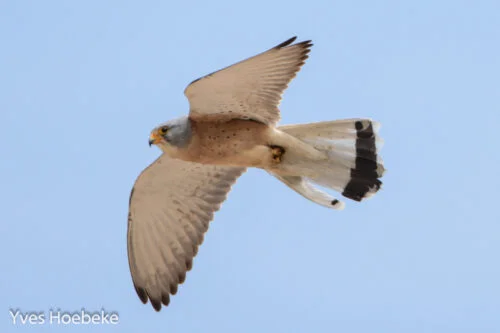
Smaller than its cousin, the Common Kestrel, this dainty falcon is a joy to behold with its rusty back and blue-grey head. These birds are lovers of open countrysides and often nest in colonies, taking over abandoned buildings or cliffs. Feeding mainly on insects, they’re often seen hovering over fields before dropping onto their prey. During courtship, the male displays a spectacular aerial show, often passing food to the female in mid-air. Summering in Portugal, they migrate to Africa when winter approaches. The historic town of Mértola is known for its charming Lesser Kestrel colonies.
12. Short-toed Snake Eagle (Circaetus gallicus)
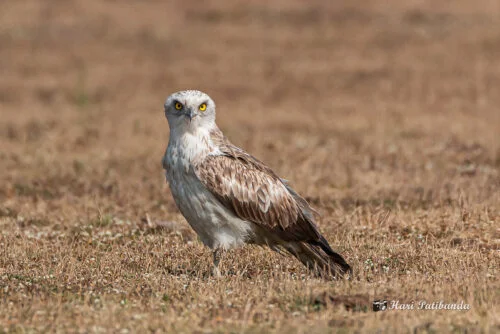
A pale and large eagle, the Short-toed Snake Eagle’s defining contrast are its dark wingtips. Warm, open countrysides with scattered trees are its preferred haunt. As the name suggests, it’s a serpent connoisseur, fearlessly taking on both harmless and venomous snakes. Soaring high, they dive with pinpoint accuracy. Their monogamous nature showcases synchronized flying displays during courtship. Summering in Portugal, they venture to Africa come winter. Keep an eye out in Algarve’s warm landscapes.
